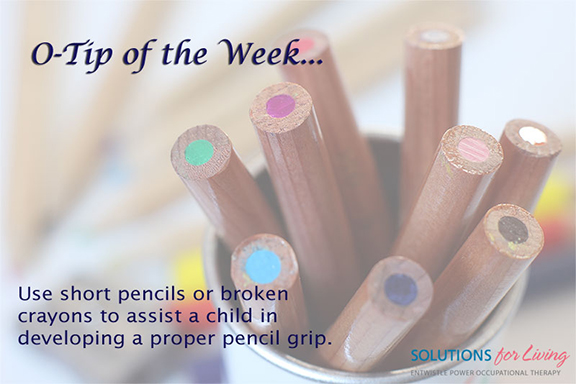Guest Blogger: Carolyn Rocca, Occupational Therapist
When dealing with any form of injury, illness, or life changing event, clients may find themselves being referred to social work (SW) or occupational therapy (OT), or even both. As there can be overlap between the roles of these professionals, it can be helpful to take a closer look at what each profession specializes in, how they differ, and what they can offer you throughout your recovery.
What is similar about both of these health professions is that their role greatly varies depending on which context the professional is working in, making it challenging to define either simply.
Note: While a SW had input into the content of this blog, the objective here is not to fully explain the SW profession, but rather to try and clarify the similarities and differences between SW and OT. For more information about Social Work, a few Ontario-based resources are listed as follows, and of course more information is available online or by connecting with a SW directly about the services they offer:
Ontario College of Social Workers and Social Service Workers (OCSWSSW) website: http://www.ocswssw.org/
Ontario Association of Social Workers (OASW) website: https://www.oasw.org/
The Canadian Association of Social Workers (CASW) describes Social work as a profession that aims to help individuals, families, groups, and communities to enhance their individual and collective well-being, by assisting them in developing their skills and abilities to use their personal and community resources to resolve problems (2017). In most provinces across Canada, the minimum educational requirement to become a SW is a 4-year undergraduate bachelor degree in Social Work, while master’s and doctoral degrees are also available (CASW, 2017).
SWs are trained to provide services across many diverse settings including children’s aid agencies, family services agencies, school boards, general and psychiatric hospitals, correctional facilities, welfare administration agencies, federal and provincial departments, as well as private practice. Not surprisingly their roles vary greatly in each of these settings however, some skills and responsibilities are common across practice contexts.
SWs are unique in that they focus on relationships as the basis of their interventions and are experts in providing services not only to the client, but also to their families. In many settings, SWs often play the role of case manager by linking the healthcare team with the client and family, and connecting the client to relevant agencies, services, or programs based on their needs and community resources (i.e. financial assistance, legal aid, social programming, and housing, employment, and education supports, etc.). Certainly, a large difference between OT and SW is that the latter can provide assistance with parent-child relationships, marriage counselling, and mediation services to assist families in resolving disputes. Fundamentally, they are experts in connecting people to one another and to essential resources.
Whereas, the Canadian Association of Occupational Therapists (CAOT) describes OT as the art and science of enabling engagement in everyday living by empowering people to perform the occupations that foster health and well-being in order to participate to their potential in the daily occupations of life (Townsend & Polatajko, 2013, p. 380). Essentially, OTs focus on helping people manage and participate in the day-to-day tasks that are important to them, including their ability to care for themselves, or carry out their role as a spouse, parent, or employee. In most provinces, to become a registered OT, one must complete a 4-year undergraduate degree, and subsequently a 2-year Master’s degree in Occupational Therapy.
Although OTs can provide services in many of the above listed areas of practice, what they offer can be much boarder in scope. While both professions can provide case management services, individual or group-based interventions (i.e. support or psychoeducational groups), and counseling services to assist people in their recovery from an injury, illness, substance use disorder, or major life transition, OTs can also offer a breadth of rehabilitative services. These services can include prescribing and teaching the use of assistive devices and mobility equipment, and providing recommendations, strategies, and education to find solutions to clients’ day-to-day functional challenges and barriers.
Although there are several differences, OTs and SWs have many overlapping roles, meaning they must communicate and collaborate to ensure they are each offering unique services when both working as part of a client’s healthcare team. For example, consider an individual who has sustained physical injuries and secondary mental health challenges as a result of a motor vehicle accident. Throughout their recovery, an OT will be essential in prescribing and training the client in the use of a wheelchair, suggesting environmental modifications so that the client can navigate in their home, and providing recommendations and education about how the client can safely perform daily tasks like showering and meal preparation. Additionally, the OT would provide psychoeducation and coping strategies to support the client in managing with their mental health symptoms, change in daily routine, altered life roles etc. Meanwhile, a SW might focus on providing counselling services to the individual as well as their spouse or children, who would be adjusting to the change in family dynamic considering the accident and resulting challenges of their spouse / parent. Further, a SW would be helpful in terms of assisting the client in accessing disability support services, funding programs, and local peer support groups.
Overall, despite any shared roles, each profession offers unique strengths, skills, and expertise that the other cannot. Their individual areas of specialization make these professionals vital members of multidisciplinary healthcare teams, and together they offer many needed services throughout the rehabilitation process.
Resources and References
Canadian Association of Occupational Therapists (CAOT) website: http://www.caot.ca/default_home.asp?pageid=2412
Canadian Association of Social Workers (CASW) website: https://casw-acts.ca/en
Canadian Association of Social Workers (CASW). (2017). What is social work? Retrieved from https://casw-acts.ca/en/what-social-work
Ontario College of Social Workers and Social Services Workers (OCSWSSW) website: https://www.ocswssw.org/
Townsend, E. A., & Polatajko, H. J. (2013). Enabling occupation II: Advancing an occupational therapy vision for health, well-being, & justice through occupation. Ottawa, ON: CAOT Publications ACE.









